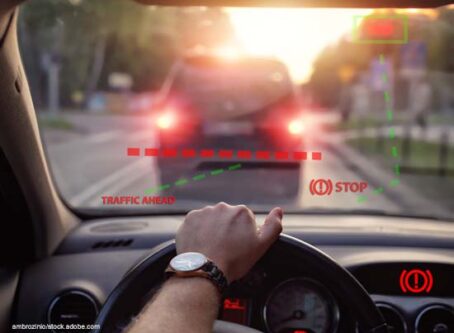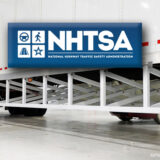NHTSA reports ‘crisis’ despite small decline in traffic deaths
The latest crash statistics mark a slight decline in traffic deaths, but the U.S. Department of Transportation is in no way claiming a victory.
According to the National Highway Traffic Safety Administration’s early estimates, 20,175 people died in motor vehicle traffic crashes in the first half of 2022. NHTSA projects that the second quarter of 2022, from April to June, represents the first decline since the third quarter of 2020.
“Traffic deaths appear to be declining for the first time since 2020, but they are still at high levels that call for urgent and sustained action,” Transportation Secretary Pete Buttigieg said in a news release. “These deaths are preventable, not inevitable, and we should act accordingly. Safety is our guiding mission at the Department of Transportation, and we will redouble our efforts to reduce the tragic number of deaths on our nation’s roads.”
The latest crash statistics include all motor vehicles and do not provide numbers regarding the number of fatalities involving commercial motor vehicle crashes.
‘A crisis’
NHTSA’s stats show that 10,590 people died in crashes in the second quarter of 2022 compared to 11,135 in the second quarter of 2021. It represents a 4.9% decline. In addition, the fatality rate per 100 million vehicle miles traveled dropped from 1.34 in the second quarter of 2021 to 1.27 during the same span in 2022.
However, the total number of traffic deaths in the first half of the year still increased from 20,070 in 2021 to 20,175 in 2022. The numbers represent a significant surge in recent years. From 2011 to 2020, the first half of a year yielded no more than 17,717 fatalities.
Even worse, traffic deaths are on pace to exceed 40,000 for the second consecutive year. The numbers have generally climbed since being as low as 32,479 in 2011.
“Although it is heartening to see a projected decline in roadway deaths in recent months, the number of people dying on roads in this country remains a crisis,” NHTSA acting Administrator Ann Carlson said.
In January, the Department of Transportation unveiled its National Roadway Safety Strategy. The plan uses a five-pronged approach, including safer people, safer roads, safer vehicles, safer speeds and post-crash care.
“Now is the time for all stakeholders, including states, local transportation entities, industry, nonprofits and others, to leverage the significant funding and tools provided under the president’s Bipartisan Infrastructure Law and join with USDOT in implementing the National Roadway Safety Strategy’s safe system approach, so we can turn the tide on years of increasing deaths,” Carlson said.
Truck crashes
While the latest numbers do not include a breakdown of crashes involving large trucks, recent statistics have indicated that commercial motor vehicles aren’t the main culprit.
Traffic deaths have been on the rise since the pandemic started in March 2020. Fatalities have climbed from 36,355 in 2019 to 38,824 in 2020 and 42,915 in 2021. Even though trucks remained on the road throughout 2020 – and many were operating under an emergency declaration – fatalities involving large trucks decreased by 2%.
The Federal Motor Carrier Safety Administration noted in 2021 that more than 90% of the truck drivers involved in fatality crashes did not receive a moving violation.
At a safety summit in June, an FMCSA representative said the pandemic sparked an “aggressive” driving culture among passenger vehicles.
“Overall traffic went down in the beginning, but the aggressiveness of drivers in general, especially among passenger vehicle drivers, went up dramatically,” said Darrell Ruban, associate administrator for FMCSA’s Office of Safety. “I’ve heard that from every state. With that behavior, the culture shifted a little bit, because people had more open road.
“Then over time, traffic starts coming back. But guess what? The culture and behavior did not change. That’s what I’ve heard around the country. That’s what I’ve seen on accident reports. So when I use the term ‘culture,’ we’ve got a daunting task ahead of us in changing the culture, especially among passenger vehicles.”
Still, truckers contend that much of the DOT’s focus remains on commercial motor vehicles. Full enforcement of FMCSA’s ELD mandate took effect in 2018, but overall fatality crashes have increased from 37,473 in 2017 to 42,915 in 2021. And despite FMCSA acknowledging that passenger vehicles were the main source of the aggressive driving, the agency is considering requiring speed limiters on most commercial motor vehicles.
OOIDA’s take
The Owner-Operator Independent Drivers Association opposes speed limiters, noting that lowering the speed of trucks alone will create speed differentials of 25 mph or more in some instances.
OOIDA also opposes the possibility of FMCSA ending its ELD mandate exemption for trucks with pre-2000 engines. The Association opposed the ELD mandate altogether and now says the statistics show that it wasn’t the safety solution many claimed it would be.
“As we approach five years since the original implementation date, it’s clear the ELD mandate has not been the silver bullet solution for improving highway safety that federal regulators and other supporters claimed it would be,” said Jay Grimes, OOIDA’s director of federal affairs. LL









